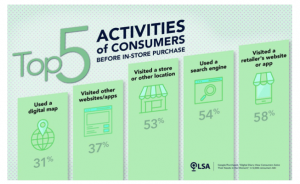We believe in the value of blogging. If we didn’t, this post wouldn’t be here.
Blogging is an important piece of your inbound marketing content strategy, but it’s not enough to just write a post and expect business to start rolling in. There are steps you can take to make sure the customers you want are reading what you’ve written.
Here are a few tips for getting more traction out of your blog posts.

1. Optimize, Optimize, Optimize
While it’s important to recognize the relationship between SEO and content, it’s not a good idea to just overload your blog post with the keywords for which you hope to rank.
There’s an art to search engine optimization. Instead of just flooding the body of your blog with your chosen keywords, sprinkle them throughout the entire post.
Put your keyword in the article’s title, as far to the left as possible. Try to keep the title under 60 characters. Include your keyword in the blog’s meta description. This should be an engaging summary of what the content is about, whittled down to 160 characters.
Use long-tail keywords, meaning keywords that are more specific, and typically longer. (Think “furniture” vs. “antique wooden furniture.”) Long-tail keywords are less competitive and tend to yield better quality traffic.
Optimize your URLs by making them short and keyword-rich. A good blog post should include images, and the alt text for those images should include your keywords.
2. External Links and Backlinks
Your post should also have internal links whenever relevant, but you should also include external links to lend more authority to your article and help your blog maximization efforts.
Studies have shown that linking out to authoritative sites can help your SEO. And getting a backlink from those sites to your site can help as well. But to get backlinks, you’ll need to ask.
Reach out through e-mail or social media. You can even ask industry websites to allow you to sit in as a guest blogger on their site.
3. Semantic Keywords
Semantic keywords are keywords that relate to your main keyword.
As our partners at the inbound marketing organization, Hubspot put it: “Imagine someone searched using the word ‘crash.’ Do they mean an accident, a stock market drop, attend an event without an invitation, or a way to describe a sound?”
Taking the example further, they point to possible semantic keyword phrases for “avoid a car crash,” including “how to avoid dying in a car crash,” how to prevent car crashes” and “what causes most car accidents.”
Google’s algorithm allows it to use semantic search to understand a search by the user’s intent. If your blog contains semantic keywords, you can help Google determine that you’re writing about and if it relates to the search.
4. Fresh Content
Search engines like websites that are filled with fresh, up-to-date content. To a search engine, a site that’s been updated recently has more relevance than one that hasn’t been touched in a few months, and therefore offers a better experience for searchers.
If you want to turn leads into customers, you should blog several times a month. (Our inbound marketing content plan for our clients often includes a weekly blog schedule.)
We realize that running a blog might be a lot to take on, especially if you’re already running a business. That’s where IQnection can help. Our digital marketing team is skilled at identifying things your audience is searching for, and in creating great inbound marketing content that can solve their problems and establish you as an authority in your field.
Digital & Social Articles on Business 2 Community
(92)
Report Post





